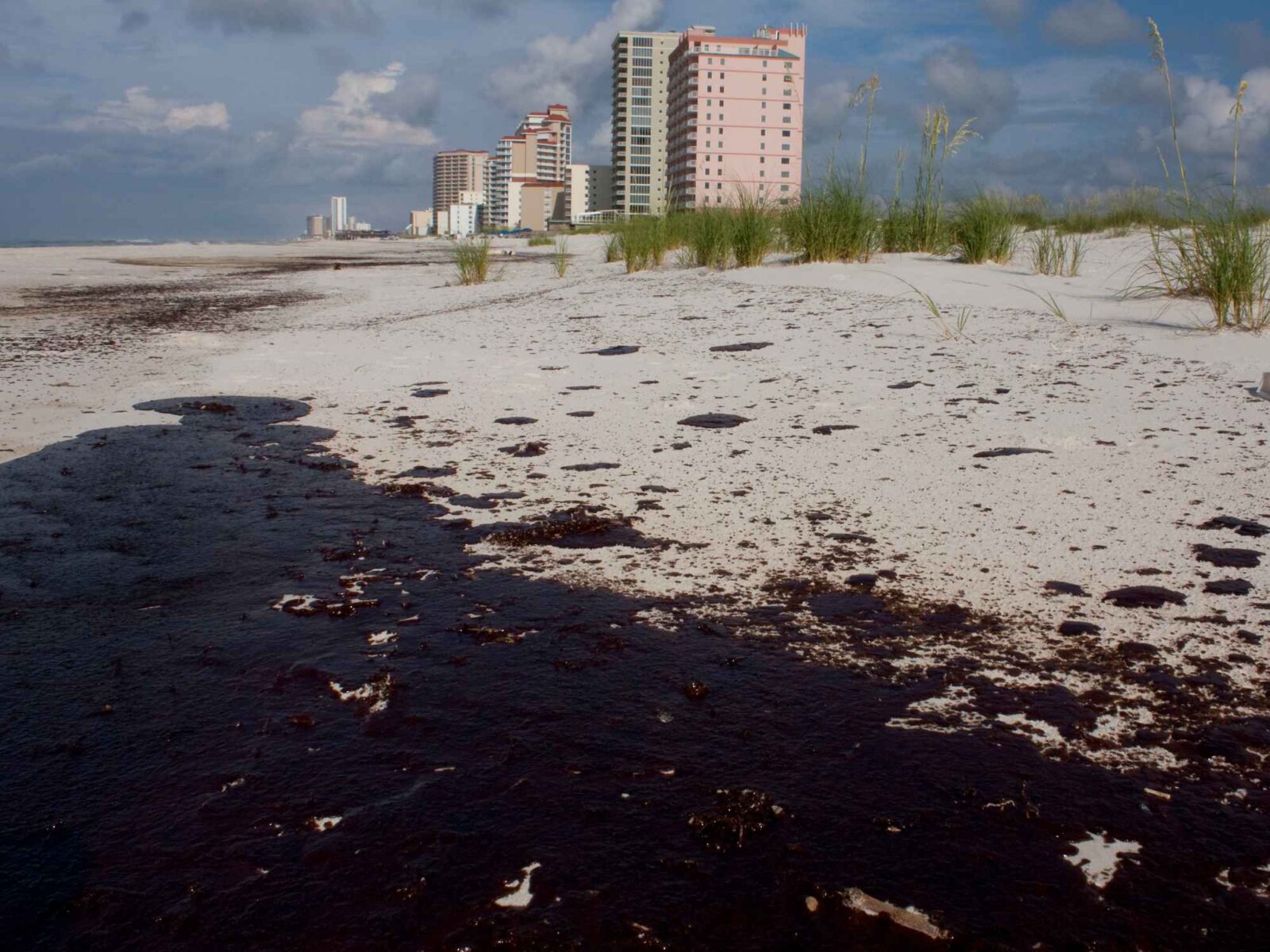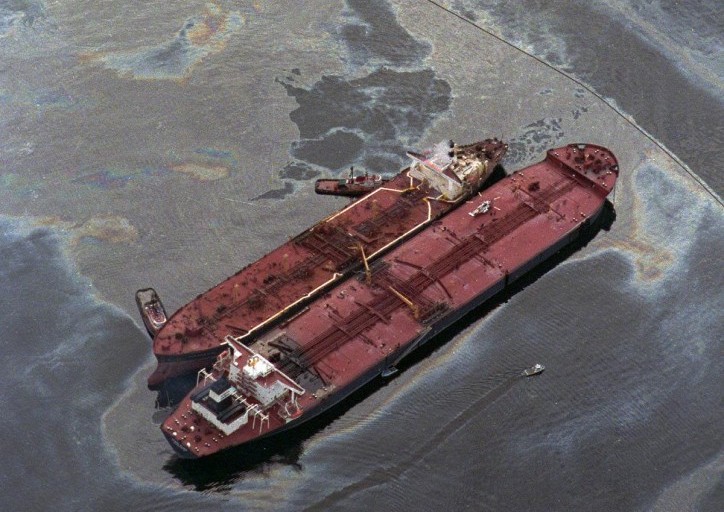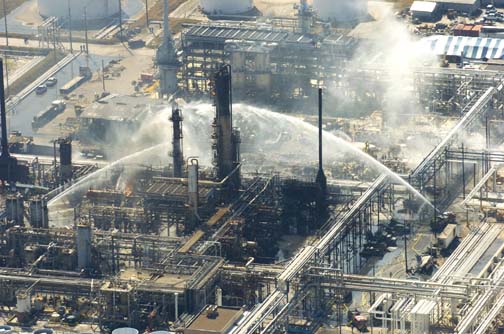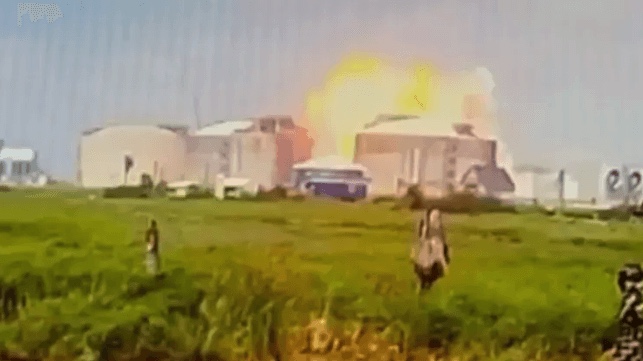EXPOSED: The Dark Truth Behind 10 Oil and Gas Industry Disasters!
ACE Staff Writer
|January 12, 2024

The oil and gas industry, often seen as a major player in the global economy, supplying energy for things like vehicles and homes, also has a darker side: despite its lofty standing, this industry is marred by a long list of disasters. From oil spills wreaking havoc on ecosystems to gas explosions causing widespread destruction, the industry’s history is full of catastrophes that have had devastating consequences. Let’s take a look at the top 10 oil and gas industry disasters and shed some light on the industry’s reckless legacy.
1. Deepwater Horizon Oil Spill

The Deepwater Horizon oil spill is widely considered to be one of the worst environmental disasters in history. The accident occurred on April 20, 2010, when the Deepwater Horizon, an offshore drilling rig located in the Gulf of Mexico and operated by BP, suffered a blowout while drilling an exploratory well, leading to a catastrophic explosion and fire. The incident resulted in the loss of 11 lives and the sinking of the rig two days later.
The blowout led to the release of approximately 4.9 million barrels of oil into the Gulf of Mexico over an 87-day period before it was successfully capped. The spill had a devastating impact on the environment, causing widespread damage to marine life and coastal habitats, harming wildlife and affecting the livelihoods of communities dependent on fishing and tourism.
The Deepwater Horizon oil spill served as a glaring call for a shift to cleaner energy alternatives, prompting a critical reevaluation of offshore drilling practices. The disaster accentuated the pitfalls of relying on fossil fuels, emphasizing the pressing need to accelerate the transition to renewable and clean energy sources.
2. Exxon Valdez Oil Spill

The Exxon Valdez oil spill, one of the most infamous environmental disasters in history, occurred on March 24, 1989, when the Exxon Valdez tanker ran aground in Prince William Sound, Alaska. The vessel spilled approximately 11 million gallons of crude oil, creating a devastating ecological catastrophe. The spill had immediate and severe impacts on the region’s marine life, causing the deaths of thousands of seabirds, marine mammals, and fish. The oil also contaminated over 1,300 miles of coastline, leaving a lasting mark on the pristine wilderness of Alaska.
The human and financial toll of the Exxon Valdez disaster was immense. Local communities that depended on fishing and tourism suffered economically, and the spill had profound effects on the physical and mental health of residents. The spill cost American taxpayers billions of dollars. Despite the extensive cleanup efforts, the long-term effects of the spill persist in the ecosystem, with some species and habitats still struggling to recover decades later. This environmental disaster highlights the importance of strict rules corporate accountability in an industry that typically cares more about making money than taking care of the environment. After the spill, it became clear that some companies—like Exxon—didn’t think much about nature and were only interested in getting richer, even if it hurt the planet.
3. Piper Alpha Platform Explosion
The Piper Alpha was an offshore oil production platform in the North Sea. On July 6, 1988, a catastrophic explosion caused by a gas leak ignited and resulted in a series of explosions and a massive fire. The platform eventually collapsed into the sea. The incident resulted in the tragic loss of 167 platform workers and rescue personnel, making it one of the deadliest offshore oil and gas disasters in history and left families devastated and communities mourning the loss of their loved ones.
Environmentally, the explosion and the subsequent oil and gas fires had immediate and severe impacts on the North Sea ecosystem. The release of pollutants, including oil and gas, posed a threat to marine life in the surrounding waters, and the burning of hydrocarbons generated air pollutants, contributing to air quality issues. Additionally, the collapse of the platform itself had the potential to cause physical damage to the seabed and marine habitats.
The Piper Alpha platform explosion highlighted the urgent need to transition away from fossil fuels. This disaster prompted a broader societal conversation about the risks, both human and environmental, associated with the oil and gas industry and underscored the vulnerability of fossil fuel infrastructure. The incident contributed to a growing awareness that transitioning to cleaner energy not only mitigates environmental risks but also enhances overall safety. It fueled calls for the need to accelerate the development of renewable technologies and to shift toward cleaner and more sustainable energy sources.
4. Gulf War Oil Spill

During the Gulf War in 1991, Iraqi forces intentionally opened oil valves and pipelines, releasing an estimated 240 million gallons of oil into the Persian Gulf in an attempt to prevent U.S. forces from landing on the Kuwaiti coastline.
These deliberate oil spills wreaked havoc on the region’s ecosystems, resulting in devastating consequences. The spilled oil coated coastlines, mangroves, and salt marshes, causing widespread damage to marine life and disrupting habitats. Simultaneously, intentional oil fires from the destruction of Kuwaiti oil wells released vast plumes of black smoke, leading to severe air pollution. This pollution not only posed immediate health risks to the local population, causing respiratory problems and skin irritation, but also had long-term implications for air quality and climate in the affected regions.
The environmental catastrophe had profound human costs as well. Beyond the immediate health impacts, the economic fallout was significant, particularly for those reliant on fishing and tourism. The loss of livelihoods compounded the challenges faced by local communities. Moreover, the intentional destruction’s enduring effects persisted long after the war, necessitating extensive cleanup efforts and environmental restoration projects. The deliberate use of oil as a weapon underscored the urgency of international cooperation to prevent such environmental atrocities and highlighted the interconnectedness of environmental and human well-being in conflict zones.
5. Montara Oil Spill
The Montara oil spill occurred in the Timor Sea, off the northern coast of Australia. The incident began on August 21, 2009 with a blowout at the Montara wellhead platform and lasted for more than ten weeks, resulting in the uncontrolled release of 4.9 million barrels of oil into the ocean and leading to the formation of an oil and gas slick on the surface of the sea. The well was eventually capped on November 3, 2009, but not before causing significant damage, both human and environmental. The spill had a significant impact on the environment and local communities, and the cleanup effort took several months.
6. San Juanico Disaster
The San Juanico disaster, also known as the “Mexico City disaster”, was a catastrophic industrial incident at a liquid petroleum gas (LPG) storage and distribution facility, happened on November 19, 1984 in San Juan Ixhuatepec, a neighborhood in Mexico City.
A leak in one of the terminal’s LPG storage tanks led to a massive explosion. The explosions, which continued for several hours, resulted in widespread fires and significant damage to the surrounding area. The incident is considered one of the deadliest industrial disasters in Mexico’s history.
The explosions and fires caused a large number of casualties, with estimates ranging from hundreds to over a thousand people killed. Many more suffered injuries. The scale of the disaster prompted the evacuation of thousands of residents from the affected area. The combustion of petroleum products and the release of toxic gases resulted in severe air pollution in the vicinity, posing health risks to those exposed to the smoke and pollutants. The explosions and subsequent fires caused extensive damage to homes, infrastructure, and the industrial facility itself.
7. Texas City Refinery Explosion

On March 23, 2005, a massive explosion occurred at the BP Texas City refinery in Texas City, TX, resulting in the deaths of 15 workers and injuring more than 170 others. The explosion was caused by a leak in a distillation tower, which released highly flammable hydrocarbons into the air. The hydrocarbons formed a vapor cloud, which ignited, resulting in a massive explosion.
The explosion led to the tragic loss of 15 lives and caused injuries to numerous workers. Many others in the surrounding community were also affected by the blast. The incident also had environmental consequences, including the release of hazardous substances into the air.
The U.S. Chemical Safety and Hazard Investigation Board (CSB) conducted an extensive investigation into the incident. The investigation revealed a combination of organizational and safety deficiencies, including inadequate training, poor communication, and deficiencies in safety culture.
The BP Texas City refinery explosion is still considered one of the worst industrial accidents in U.S. history.
8. Ufa Train Disaster

The Ufa train disaster occurred on June 4, 1989, near the city of Ufa in the Soviet Union (now Russia). It was one of the deadliest train disasters in history.
A natural gas pipeline ruptured near the railroad tracks, leading to the release of a significant amount of gas. Shortly afterward, two trains, including a passenger train and a liquid petroleum gas (LPG) train, collided. The gas ignited, causing a massive explosion and subsequent fires.
The Ufa train disaster resulted in a tragic loss of lives, with estimates of casualties ranging from hundreds to over a thousand people killed. Many others suffered severe injuries. The explosion and subsequent fires also released toxic gases into the air, contributing to environmental pollution.
The Ufa train disaster remains one of the deadliest accidents in the history of the oil and gas industry.
9. Flixborough Disaster
The Flixborough disaster occurred on June 1, 1974, at a chemical plant in Flixborough, North Lincolnshire, England. The facility was operated by Nypro (UK) Ltd. and was involved in the production of caprolactam, a chemical used in the manufacture of nylon. The accident was caused by a catastrophic failure in a bypass pipe that had been installed as part of a temporary modification to the plant’s piping system.
The bypass pipe failure triggered a massive explosion that resulted in a release of a large quantity of cyclohexane, a highly flammable substance, into the atmosphere. The explosion led to the tragic loss of 28 lives and caused injuries to many others, both within the plant and in the surrounding community. It also caused the collapse of several structures, including the plant’s reactor and nearby buildings. The release of chemicals into the atmosphere may have also resulted in environmental pollution, though this aspect is often overshadowed by the human tragedy.
10. Freeport, TX LNG Explosion

On June 8, 2022, a massive explosion ripped through the Freeport Liquefied Natural Gas export plant in Freeport, TX, causing a large fireball and severe damage to the plant. The blast caused significant damage, including cracked concrete and damaged electrical equipment, with an estimated cost of nearly $67 million, but luckily, the blast did not result in any human casualties.
Two days before the explosion, a plant operator submitted a report noting something was wrong with a pipe, but no senior Freeport LNG employees followed up. In the aftermath, the LNG plant’s operator, Freeport Development LNG, faced harsh criticism for its handling of the situation, with regulators highlighting systemic issues, including the removal of overpressure protection and closed valves, as well as a lack of follow-up on the reported issues. The findings highlighted deficiencies in safety practices, emphasizing the importance of robust safety protocols and oversight in the LNG industry.
These are just a few of the oil and gas industry disasters that have happened in the recent past. Oil spills and gas explosions have wreaked havoc on the environment, causing severe harm to ecosystems and wildlife. Additionally, these incidents have led to substantial human suffering, with devastating health impacts, displacement, and economic losses in the affected areas. The environmental and human damages resulting from these disasters underscore the urgent need for sustainable energy alternatives to mitigate such catastrophic consequences.
Join our Youth Action Network
More Blog Posts

Unnatural, Not Unprecedented
For two weeks, residents of Southern California endured a waking nightmare. Parents raced against time – hurrying down the driveway …
Read MoreCrafting a Vision for the Future: My Experience at LCOY USA 2024
Dry and sunny Tempe, Arizona where temperatures have been over 100 F for 113 consecutive days, delegates gathered to attend …
Read More
7 Ways to Weatherproof Your Home on the Cheap (+1 Not-So-Cheap)
As colder weather sets in, understanding how to weatherproof your home is key to maintaining warmth and reducing energy costs. …
Read More